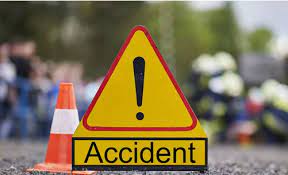A prescription for action: Nine steps after the next 21 days
India is closed for business. For the next 21 days, and perhaps longer if that isn’t enough. Everyone is to stay home.
We have a hard time wrapping our heads around what this exactly means. How about migrant construction workers getting to stay on at the now closed site, their temporary home during the construction? Or do they need to return to their village, though the trains are no longer running. We hear of large caravans of people walking from Delhi to Bihar. Should we assume that they are maintaining social distance as they huddle into small unauthorised spaces to spend the night? Should we blame them if instead of walking from Delhi to Darbhanga, they choose to ride on the back of a truck, 25 men and women in 25 square feet?
Or the residents of Dharavi in sweltering Mumbai, where temperatures are already touching the mid-30s and will go up further? Are they supposed to sweat it out together, six people in a 10 by 10 by 10 tin can, both kitchen and bedroom? Without the occasional respite, the park where the sea breeze comes in after dusk, the shaded corner where you go to take that precious phone call.
And what will they do when the money runs out? Most Indians have no guaranteed income when the work is gone. What happens when their savings are gone? Who can blame them if they step out to look for some money to feed their families?
Then there is just confusion. A recent quick survey we did in Karnataka suggests that while there is broad awareness of the disease, there is wide variation in people’s understanding of what not to do.
None of this means that the current policy is necessarily wrong. But it does mean that we should expect the implementation to be imperfect or worse.
In terms of what is coming and what to do in the coming months, the implementation gap has a number of important implications.
A rush of migrants out of Delhi on Saturday night, at the Anand Vihar bus station. (Express photo by Abhinav Saha)
First even if the lockdown works and the “curve gets flattened”, and the overall spread of the disease remains contained, the disease will continue to widen its ambit, as unknowing carriers reach new populations. Given that the disease tends to be dormant for two weeks or so, and only those directly connected to a case (i.e. not the neighbour on a bus ride) are tested, these invisible agents are not easily identified and as a result, the number of such apparently innocent contacts can be large; the son who comes home from Delhi could infect the entire extended family before it gets discovered.
Second, there are places where stemming the spread of the disease will be very hard, once someone has it. Proper social distancing and complete lockdowns are just very hard to achieve, for example, in many urban slums.
Third, the fact that the lockdown started before the disease reached very many people, means that almost no one has immunity. This means that as long as the disease is not fully eliminated in the next three weeks (very unlikely), the disease will start to spread at an accelerating rate as soon as the curfew is lifted. That does not mean that the curfew was useless — for one, it probably bought us some time to put a plan in place and limit the number of infections in the next few weeks — but the problem will be there with us in 21 days.
There are places where stemming the spread of the disease will be very hard, once someone has it.
We, therefore, need to be prepared for the disease to explode in pockets all over the country, including some of the more remote rural areas, over the next many months. Moreover, some of these hotspots will be exactly where our system of healthcare is the weakest. On average, we have about 1/8 as many hospital beds per capita as China, which is frightening in itself, but even those are concentrated in the more prosperous areas.
“Doctors” with no medical qualification are the dominant source of day-to-day healthcare in much of India, but at least with the more familiar ailments they sometimes know the standard protocols. Patients with COVID-19 will come to them for diagnosis and treatment, neither of which they are equipped to deal with. They will go to the hospitals, if at all, too late, having spread the disease along the way.
What can we do to limit the extent of preventable tragedy?
First, try to make sure that every household has at least one person who knows the key symptoms of the disease. Second, spread the awareness that some people will get infected despite their best efforts; we want to avoid ostracism and concealment. Honest reporting is key. Third, offer multiple ways to report; a hotline, the ANM, the Asha, etc.
Fourth, consider training the rural health practitioners (including the unqualified) in the detection of those symptoms and reporting them to the relevant authorities. Fifth, make sure that those reports are collated quickly so that we know where the new hotspots might be and more generally, focus on coordination of the evidence from across the country so that broad trends can be identified.
Sixth, in each state create a large mobile team of health professionals, doctors and nurses, with testing kits and, ideally, ventilators and other equipment. The idea is a part of this team will be quickly deployed wherever the number of reports seems to be growing fast (including in nearby areas in other states). If the current lockdown is successful, the most plausible scenario is that there will still be many mini upsurges at different points of time (as against a single catastrophic burst, which would be much worse) and this allows the possibility of using the same team in multiple locations.
Seventh, to build this team and make sure it has access to the necessary equipment, require all health professionals (and not just those who work for the government) to be available for call up where needed and give the teams the right to make use of all hospitals, private and public, as needed.
Eighth, be much, much bolder with the social transfers schemes. Without that, the demand crisis will snowball into an economic avalanche, and people will have no choice but to defy orders. What the government is offering is now is small potatoes — at most couple of thousands for a population that is used to spending that much every few days. If the point is to stop them from going out to find work and thereby spreading the disease, the amounts probably need to be much larger.
Moreover, eligibility for the schemes is confusing (who is a farmer?) and tied to eligibility for the “business as usual” schemes known to have many gaping holes. It is better to go for universal coverage and find ways to discourage those who really don’t need it (publish lists of beneficiaries so everyone knows who they were?) And now is clearly the time to deploy the JAM (Jan Dhan, Aadhaar, Mobile) infrastructure that the government takes pride in: the transfers should be sent directly to bank accounts, with an accompanying electronic message to the recipients.
Finally, be prepared to continue this “war effort” until the vaccine comes on line. Then vaccinate as many people as possible. And start to upgrade the healthcare system — let us be better prepared for the next time.
INDIAN EXPRESS





